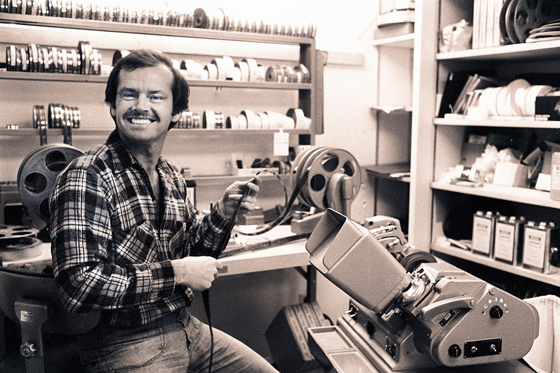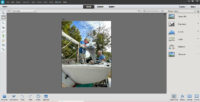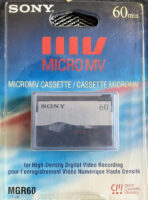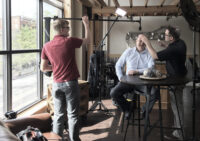
Shooting for the edit is smart shooting. It saves time and money for the editor. If you don’t know much about editing, learn before you shoot anything important. Otherwise you may shoot footage that cannot be edited. Knowing how to shoot for the edit makes your work more valuable to others.
B-roll Always Helps
B-roll shots help hide edits, lengthen or shorten shots, and explain. B-roll shots can also help the talent work with shorter chunks of script. They can deliver 2 or 3 sentence bits which will make memorizing much easier.
Look over the script or outline before you shoot. Make a list of what would make good B-roll shots.
When you’re on location and have finished shooting the A-roll, capture the B-roll shots from your list, but don’t stop there. Look around and brainstorm – what else would make a good B-roll shot? B-Roll can also help spice up a long talking head shot. The script can give you the ideas of what shots would work as b-roll over that talking head.
Rehearse
Rehearse the action or camera move before you record. This helps cut down on unnecessary footage. Would you or your editor rather look through 2 hours of footage or 4 hours of footage?
Clip Handles
Give your editor “clip handles” for a few seconds at the head and tail of every shot. This can be very helpful when you need a shot to run a bit longer than expected. Tell the actors to give it a beat after they hear you say “action.” Likewise, don’t say “cut” too quickly. Let it roll for three extra seconds keeping the camera still. This helps when the editor needs a long fade to black.
Mark Good Takes
If you have the manpower, a shot log can be quite helpful, but when short-handed this will have to be done in the editing room. At the very least, try to mark the good takes. You might reach around the camera and record a one-handed “thumbs up” at the end of the shot. This is a really fast way to find the good shots in the editing room.
Slate Practices
An “insert slate” can be helpful in editing to quickly identify shots, especially those that look very similar, but have important differences. A “clapboard slate” is necessary if you need to synchronize the audio track in post production, but is not necessary if your camera is recording the primary audio. Alternatively, many people use a program call PluralEyes which will synchronize audio tracks automatically. Never use a Sharpie marker on a slate. It will leave a permanent mark. Acrylic slates can be quickly erased and re-written with a dry erase marker.
If you’re a one-man band, a pack of post-it notes and a pen is a fast way to make notes about shots. You could shoot the note just like you would a slate. The sticky part helps when you’re working alone.
Coverage
It’s usually not efficient to shoot chronologically in the order scenes appear in the script. To help with continuity, you may want to shoot all your interior shots together and then exterior shots together. A slate will easily identify scene and take numbers.
For variety it is often wise to shoot multiple takes of a scene, with wide-angles, close-ups, etc. This gives the editor lots of good choices. That’s really what shooting for the edit is all about – giving the editor lots of good choices. Be sure they shots you make can be edited and you will be loved by your editor or thankful if the editor is you.
Avoid Making Shots That Will Not Edit
An example of shots that won’t edit are two shots made with the same focal length that are taken from nearly the same place. This would be a jump cut and not look pretty. Make the camera position of the second shot 20 degrees or more to either side of the first shot. Two shots made from the same position can work if the focal length is significantly different e.g. one shot with an 18mm lens and the second shot with a 105mm lens which is easy to do with a zoom lens. These two shots will edit just fine. Try it and see for yourself.






Great suggestions Hal! Here are a couple of other thoughts.
1. Always record :30 seconds of room tone, especially when recording audio. This is a life saver.
2. Always have your on-camera talent keep looking at the camera or off-camera interviewer after they finish. This helps the editor fade to black easier, or perform a split cut.
3. For interviews, always have the interviewee paraphrase your question into their answers. The last thing an editor needs is to hear something like “yes, I really like it”…
Greg Ball, President
Ball Media Innovations, Inc.
https://www.ballmediainnovations.com
3.
I particularly liked the point about Clip Handles. I am a firm believer in the value of leader footage, especially with pans and tilts as it allows you to edit out any jerky motion at the beginning of the shot. This practice is also helpful if you want to fade up the ambient audio, making for a less harsh cut.
In my experience shooting sports footage, I developed a good rule-of-thumb that 8 seconds is the minimum length of a shot sequence for clean b-roll. Any shorter and the pace gets choppy and overwhelming to the viewer. In fast paced sports this often means maintaining a smooth transition to the player celebration, especially in single camera coverage.
Broadcast editors also need to be conscious of overlay graphic placement so it’s great when your cameraman has an understanding of which areas of the screen have the potential to be obscured when choosing their shot composition. The simplest example of this which springs to mind is leaving bottom third space for captions on interview pieces.